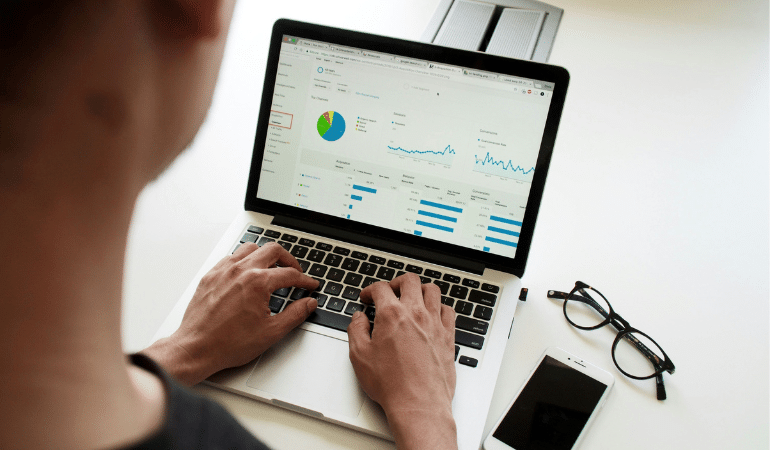Post the Covid-19 pandemic, the retail landscape has changed forever. The retail industry has had to reassess every marketing and operational strategy of the past. Consumers’ shopping habits have always been dynamic, but no one could have predicted the change in retail trends for the year 2020.
While retailers assess the lasting effects of the major havoc wreaked by the pandemic last year, and we wait for things to get back to normal, it is safe to say that the retail industry is resilient and determined. We can expect good things. The retail sector is being reshaped and the consumer preferences of last year are set to become the industry norms of this.
As the real and digital worlds decide to work hand in hand instead of being at loggerheads, we can expect a massive change in consumer behavior. People still sometimes want their favorite online retail stores to have physical stores yet the oldest brick and mortar stores have also been forced to get online.
There were some traditional retailers that were having a hard time regardless of Covid-19, but with the convergence of the pandemic and technology that is changing by the second, 2021 is a year for the books. We expect these 15 retail trends to stand out this year:
1. Ecommerce will continue to grow
2020 was massive for ecommerce, and it is currently at an all-time high. Retailers who had ignored the massive potential of the internet, realized it was a force to reckon with. For those who couldn’t make the transition to the digital world in time, it was an unfortunate end to their businesses. For those who did, not only did they survive, they opened new avenues for revenue that will benefit them forever.
As offline sales continue to dip due to lockdowns, we can easily expect ecommerce to grow during and well beyond the end of the pandemic. The future is online, and over 2.14 billion people worldwide are expected to buy goods and services online in 2021.
Source: BigCommerce
2. Digitally enhanced operations
Websites are becoming savvier. UI and UX designers are making web interfaces as convenient and as interactive as possible. The Magento 2 upgrade to more than 400,000 ecommerce websites is proof that the digital world is getting safer and faster, and adapting better to the real world.
Brick and mortar stores are also digitally enabling shopping to make the store experience frictionless through things like click and collect and cashierless checkouts. The 2021 shopper is digitally aware, and with the availability of low capital investments that are easy to update, numerous digital and automation initiatives are being taken every day by retailers.
Retailers are also using technology to make life easier for their employees and themselves. Popular softwares in the market for retailers are for monitoring employee attendance, employee training, and enterprise task management. Glip is not your average task management software, it also helps keep your staff more productive as they plan and prioritize their tasks and projects.
3. Sustainability is key
Climate change is a top priority and global retailers are expected to continue to focus on their sustainability agendas. The climate emergency is accelerating, and sustainability efforts are the need of the hour. Retailers are focusing on initiatives to reduce plastic and food waste.
We expect apparel retailers to focus on carbon intensive processes such as fabric sourcing and shipping. Not to mention how dependent their carbon emissions are on outsourced manufacturing. Fast fashion arrivals declined 11% in the first quarter last year.
We shall be seeing fast fashion retailers making environment-conscious choices to stay relevant with Gen Z. To build trust and loyalty among this ‘woke’ generation, retailers need to make many ethical considerations. Nike is experimenting with kelp leather, a vegan alternative. H&M is spearheading recycling techniques to turn old textile waste into raw material.
4. Focus on holistic personal health and self-care
While the pandemic changed many consumer businesses, the whole health crisis has forced some purchasing habits that will truly become the “new normal”. As cliche as that phrase has gotten, washing hands, sanitizing your surfaces, and just being concerned about your physical health is something that will dominate retail trends in the FMCG (Fast Moving Consumer Goods) market for times to come.
Google Search Trends shows a 250% increase in self-care related searches, and 34% of consumers are increasing their purchase of personal hygiene products. There is a new focus on a healthy lifestyle; if staying healthy can increase your immunity to Covid-19, it can do so for other diseases too.
Not just hand sanitizers and soaps, we expect a rise in sales for self help books, skin care, air purifiers, plants, sleeping remedies, and self-care kits. We can also expect an increase in sales of meditation apps and software that can contribute to your mental health and peace.
5. Shopping on social media
We expect social commerce to remain on the rise. Social commerce offers shoppers the chance to make purchases on social media apps or sites, making it a seamless and flexible way to shop. 2020 saw Shopify partner with TikTok, and the introduction of Facebook Shops. Brands are also using instant messaging apps for marketing, like Slack and Whatsapp. There are many Slack competitors, too, that can be used by retailers for their marketing and sales strategy.
These customized storefronts on social media have great potential for a personalized shopping experience. As per retail trends of last year, social commerce is set to become an integral part of ecommerce in the coming year, too. No longer will you only be concentrating on building your brand on social media.
Source: YouTube
6. Influencer marketing to be a major part of strategy
Influencers have been the least hit of all job profiles in last year’s economic upheaval. They can work from home, and with retail sales dropping, brands look to them to ignite online sales. With everyone stuck at home during lockdown, these influencers have been our entertainment. Even if content isn’t curated and edited, real, unadulterated content is selling like hot cakes.
As retailers continue effective collaboration strategies with influencers, video will be 2021’s most important medium for influencer partnerships. Since physical stores remain closed in lockdown, the next best thing is to see the gadget or dress you’ve been longing for on video.
7. Online stores going physical
In the next five years, digitally native brands were expected to open 850 brick and mortar stores. Online stores have limitations, which will truly come to light once the pandemic ends and we can go about shopping as we once did. While we might have made do with online shopping, the truth is there is nothing like the in-store experience.
Retail trends will shift once stores reopen, online marketplaces are moving to traditional retail, so no avenue goes unexplored. The Amazon Fresh grocery store offers a seamless grocery shopping experience online and offline.
Source: DailyNews
8. Online grocery to increase
Grocery shopping online took a sharp increase when the lockdown started last year. Ecommerce has reshaped the grocery platform. People tried online grocery shopping for the first time during lockdown. Many realized the convenience it offered and how a trip to the grocery store is now an exercise in futility. Ordering from the comfort of home is a retail trend that will continue in 2021, even post-pandemic.
9. AI and AR
Artificial Intelligence (AI) and Augmented Reality (AR) are the new game changers in the digital economy. Using AR to view the products you intend to buy is the next best thing to physically assessing it. It is an essential part of ecommerce retailers’ business model as they try to bridge the gap between the digital and physical world. Shopify interactions with products having AR content have a 94% higher conversion rate than those without.
Chatbots are an example of AI powered collaborative customer support software that improve the shopping experience. A cheery chatbot is just like a salesperson at a physical store, able to take on queries in real time, while saving money in human resource expenditure. Retailers have embraced chatbots to mimic traditional retail spaces and the help available in the form of personal assistants.
10. Amazon will continue to reign supreme
Amazon is king of the online marketplace and retail trends of last year suggest it will continue its winning streak. When shopping for new products, 49% of US consumers start by looking at Amazon. Amazon has a winning retail strategy that allows brands to create their unique brand identities, tell their story, and build brand equity.
With programs like Amazon Affiliates and major investments in the delivery supply chain, Amazon is committed to customer satisfaction and their business model is focused on a brilliant online shopping experience.
11. Better logistics
Fast delivery is critical and necessary to the online shopper. The time between buying any product online and receiving the product at your doorstep is what differentiates a good retailer from a bad one. Those retailers that are offering same day shipping are going to march ahead of their competitors. Curbside pickup has also been essential to keep many retailers afloat.
This is the age of instant gratification and immediate order fulfillment, and online shoppers want their orders ASAP. An improved supply chain that has learnt from the mistakes of 2020, when supply chain was strained, will lead 2021. With the advent of delivery drones, tech driven supply chain innovation will remain at the forefront in 2021. The direct sales model, pioneered by Avon, may also see a comeback.
12. Apparel will make a come back
Apparel was one of the most distressed retail segments in 2019. Many major fashion retailers filed for bankruptcy that year. In the wake of the pandemic and ensuing economic downturn, additional bankruptcies were filed. People were stuck at home, with little to no need for new clothes. Not to mention restrained spending power due to rising unemployment.
As restrictions are lifted, online shopping increases, and so do the chances for recovery of apparel retailers. If brands focus on digital channels as well as their physical stores, once consumer demand increases, we can avoid further bankruptcies.
13. Strong omnichannel retail
This is a retail strategy that lets shoppers use multiple channels seamlessly, and pick up where they left off using a completely new medium and method of communication. Omnichannel retail offers customers a unique experience that is personalized and interactive. If customer experience is important to you, you will need to give attention to omnichannel retail. These include your physical stores, social media profiles, websites, and apps.
As customers expect a flawless omnichannel experience, 2021 retail trends dictate those who offer a strong omnichannel retailing experience will retain more customers than those who don’t.

14. More flexible payments
Customer satisfaction is a retail trend that shall be on the rise this year and every year. Flexible payments make customers happiest. These include a “Buy now, pay later” model, that makes purchases affordable in this recession. Not to mention, contactless, cashless payments. You grab whatever you want from the aisles and walk out with one tap from your mobile. Convenient and fast.
Digital wallets shall continue making life easier for customers. Whether Apple Pay or Google Pay, digital wallets reduce the lengthy checkout procedure on ecommerce websites.
15. Subscription model
Subscription ecommerce is a new and innovative way to retail, and is getting increasingly popular. Retailers send out monthly packages against membership fees and receive recurring revenue. Customers see this as a better way to buy their favorite products and discover new ones at a relatively lower cost.
Subscription customers remain loyal and subscription plans allow you to maintain customers for a greater long-term value. Retailers, however, need to be cognizant about what the subscription plan includes, as customers become choosy if they have multiple subscriptions in a strained consumer economy.
Get ahead of the curve in 2021
Ecommerce analysts have painted a rosy picture for 2021 in the bleak aftermath of 2020. While ecommerce will keep gaining momentum, it only accounts for 16% of total retail sales. There need to be initiatives by retailers to build trust and loyalty not only with customers, but with staff and communities if they want to make profits.
Technology will be central to the retail trends of 2021. Retailers need to retool their merchandising and marketing strategies and embrace the digital world, while online retailers need to make a mark in the physical world. It is important to stay relevant online and off.
The economy is struggling, only retailers who create flexible and agile ways of working will be able to survive. A fresh cultural mindset is needed, as and when the health crisis draws to a close. Retail strategy needs to align to consumer habits and reinvent itself. A well planned omnichannel strategy will help retailers thrive in the world of retail. It all comes down to satisfying your customers and giving them a consistent world class shopping experience.







